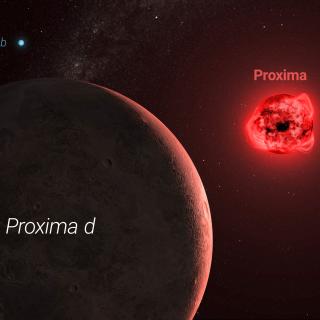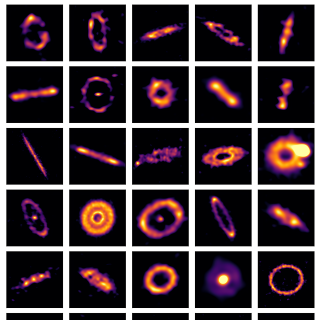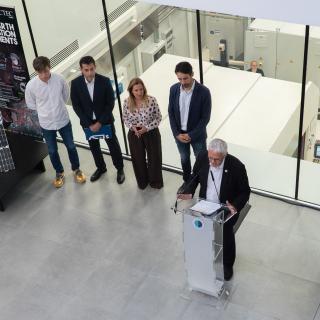Serzh Sargsyan, President of the Republic of Armenia, will present the award to Garik Israelian, a researcher at the Instituto Astrofísico de Canarias (IAC).
Israelian will share the prize with two members of a pioneering European team investigating extrasolar planets: Michel Mayor, discoverer of the first exoplanet, and Nuno Santos, an astronomer at the University of Oporto.
The prize, amounting to 500,000 USD, is considered to be the most prestigious in astrophysics after the Nobel Prize.
17 September, 2010.- Serzh Sargsyan, President of the Republic of Armenia, will present the Viktor Ambartsumian International Prize for Astrophysics today, 17 September, in Yerevan, capital of the Eurasian country, to the pioneering European exoplanet research team, formed by IAC researcher Garik Israelian, Michel Mayor from Geneva Observatory, discoverer of the first exoplanet, and Nuno Santos, an astronomer from the Astrophysics Centre of the University of Oporto.
Among those attending the ceremony, which will take place in the Academy of Sciences of Armenia at 19:00 hours local time (16:00 Spanish Peninsula time), will be Leslie Sage (a senior editor of Nature), Robert Williams, President of the International Astronomical Union, Francisco Sánchez, Director of the IAC, Denis Monard, President of the Swiss Academy of Sciences, Yervant Terzian, Director of the Department of Astronomy at Cornell University (USA), and Jean Pierre de Greve, Vice Rector of the Vrije Universiteit Brussel (Belgium).
Amounting to 500,000 USD, this international prize, now to be presented for the first time ever, is considered to be the most prestigious award in the field of astrophysics after the Nobel Prize. Among the members of the Steering Committee for the award are Robert Williams, President of the International Astronomical Union (IAU) and Director of the Space Telescope Science Institute, the renowned British astronomer Martin Rees (University of Cambridge) and French astronomer Catherine Cesarsky, the first woman to be president of the IAU.
The prize is in recognition of the contribution made by this team of astrophysicists to our understanding of the formation of planetary systems and their host stars. It was only 15 years ago that Michel Mayor, together with his colleague Didier Queloz, discovered the first extrasolar planet: 51 Pegasi b. The collaboration between Mayor and Israelian began in 1999, after which they sought the cooperation of the third member of the team, the then student Nuno Santos. The rate of discovery since the end of the last century of extrasolar planets, also known as exoplanets, and their host stars has been dizzying; to date, 490 exoplanets have been found, 200 of which were discovered by Michel Mayor and his team.
Nevertheless, there remain many unknowns to unravel concerning the formation of planetary systems; their huge diversity poses a challenge to researchers. Over the last ten years the three award-winning astronomers (nominated by the Swiss Academy of Sciences) have established some of the physical and chemical properties of the host stars with respect to the formation of planets surrounding them. The team has made contributions that have impacted greatly on planetary system formation models, such as the discovery that stars with planetary systems are richer in metals and contain little lithium, just like the Sun.
New “Earths” to be discovered
Another major contribution by the award-winning team of astrophysicists is to have established that there are not only giant planets (such as Jupiter) and medium-sized planets (such as Neptune) surrounding the stars under study, as was previously believed, but that there might also be Earthlike planets. After discovering Gliese 581 d, the first exoplanet to be found within the habitable zone of the lightest planet yet detected around a normal star (Gliese 581), the team recently discovered a world that might be covered in lava, whose density is similar to that of the Earth.
‘In a couple of years,’ Israelian explains, ‘with the commissioning of a new higher precision spectrograph, we should be able to find new “Earths”. In ten or twenty years’ time, improvements in spectroscopic technology will enable us to study the atmospheres of these planets and determine whether they contain bio-markers – and consequently whether there is life on other planets.
Ambartsumian, one of the most significant astronomers of the XX century
Viktor Ambartsumian (1908-1996) was one of the most influential astronomers of the last century. Father of theoretical astrophysics in the Soviet Union, this Armenian scientist was the first to make an estimate of the age of the Milky Way (some 13 thousand million years). He also discovered stellar associations, and that the interstellar medium is not homogeneous. According to Allan Cormack, 1979 Nobel Laureate in Medicine for his work on X-ray tomography, it was Ambartsumian, at only 27 years of age, who first suggested in 1935 how to perform a tomograph.
For further information and interviews:
http://vaprize.sci.am/2010win.html Garik Israelian: gil [at] iac.es (gil[at]iac[dot]es)


